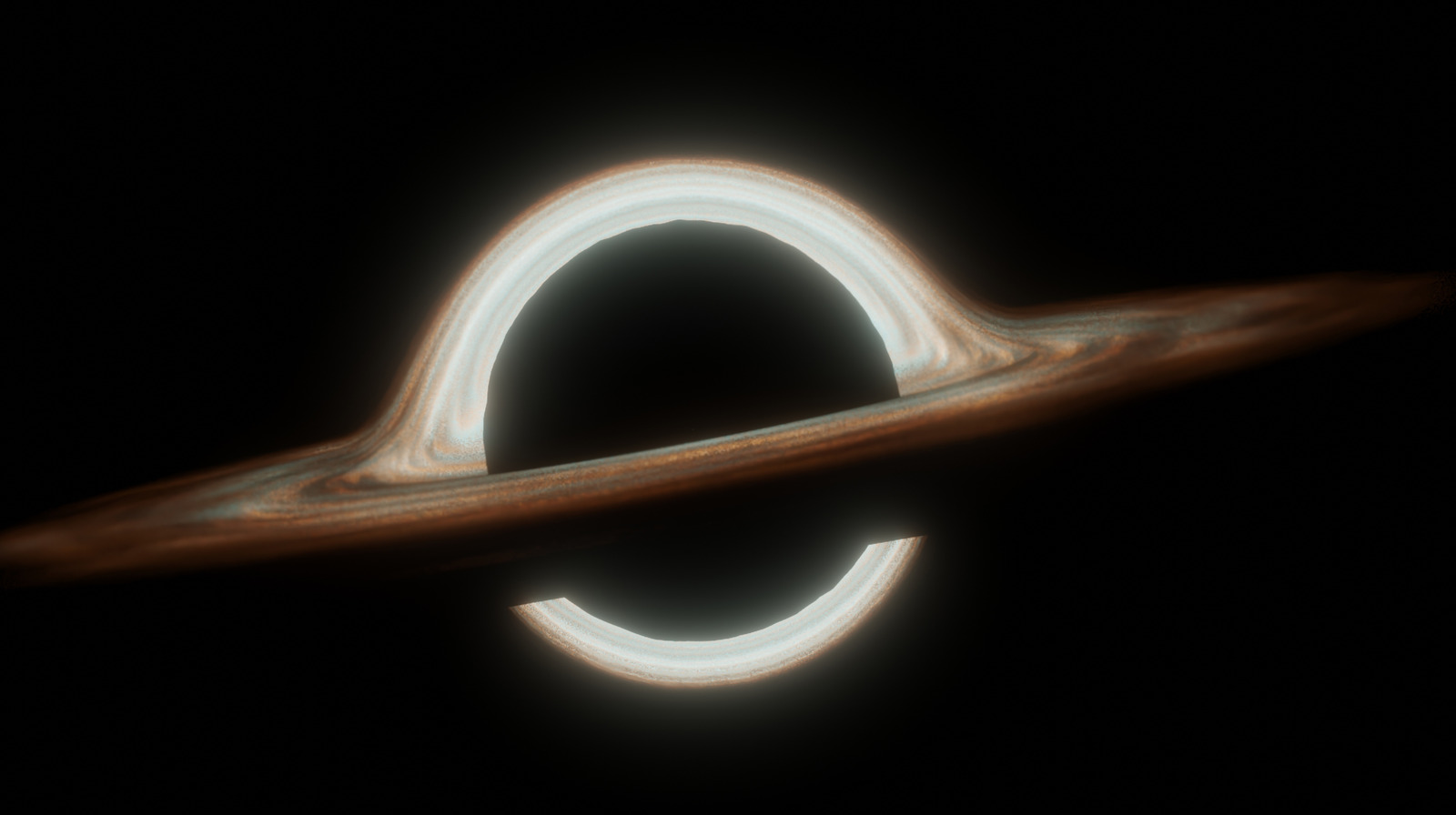
5 Questions About Black Holes That No One Has Been Able To Answer – SlashGear
Black holes remain one of the universe’s most fascinating — and least understood — phenomena. These celestial objects have so much mass that not even light can escape their gravity, hence the name. But beyond that, the laws of general relativity, which are the basis for modern physics, break down when trying to understand black holes. That’s because once gravity and mass become infinite, the equations we use to understand them no longer function.
As scientists advance their understanding of quantum physics, it’s becoming possible to learn more about how black holes could work. Also, the technology we use to directly observe physical space is advancing and giving scientists more information to work with, like the first-ever recorded gravitational waves in 2016.
While these advancements help create and refine new theories about the nature of black holes, they haven’t gone far enough for most of these theories to be proven. There is still a lot we don’t know about black holes, especially when it comes to the singularities that lie beyond their event horizons. Even some seemingly simple questions about black holes are still unanswerable.
Are there micro black holes?
 D-VISIONS/Shutterstock
D-VISIONS/Shutterstock
Astrophysicists know that black holes can vary in size. The closest known black hole to Earth is also the smallest recorded: three times the size of our Sun. While that’s not exactly tiny, it is a great deal smaller than other black holes, including the supermassive black hole at the center of the Phoenix A galaxy. That black hole is estimated to be the largest known, and could be 100 billion times the size of the sun.
How small black holes can be is something science has yet to determine. Many physicists believe — but have not proven — that micro black holes the size of an atomic nucleus may have existed. Since black holes are ultra dense and compact, even a micro black hole smaller than an atom could have a couple billion tons of mass, similar to the size of a small asteroid. Micro black holes could have been relatively common in the earliest days of the universe, shortly after the Big Bang.
But quantum mechanics suggest that black holes actually dissipate over time, and the smallest ones would evaporate first. While most physicists today believe micro black holes would be too difficult or impossible to form naturally today, it’s unknown if micro black holes from billions of years ago are still floating around somewhere, or if they’ve all disappeared by now. Scientists may end up creating microscopic black holes themselves, so perhaps we’ll find out one day.
What causes supermassive black holes?
 Handout/Getty Images
Handout/Getty Images
While micro black holes are theoretical, scientists are certain that supermassive black holes exist — they’re hard to miss. By their very definition, black holes are impossible to see because light cannot escape their powerful gravity. However, we can determine a black hole’s rough size and location by the material being pulled in toward it that has not yet passed its event horizon. That’s how we know, for example, that a supermassive black hole, Sagittarius A*, lies at the center of our Milky Way galaxy.
But how supermassive black holes form in the first place remains a mystery to scientists. Most normal-sized black holes are formed after the death of stars. These dying stars go out with a bang and explode as powerful supernovas. But no stars are large enough to create a supermassive black hole if they exploded.
Supermassive black holes are orders of magnitude larger than average black holes. Some scientists theorize that, instead, they form from the collision of giant galaxies, but others think that the universe is not old enough for there to have been time for black holes to get as large as they have in this manner. Another theory is that supermassive black holes emerged during the Big Bang or shortly after, before stars and galaxies formed from galactic dust. However, the further we go back in time, the harder it is to observe data and prove or disprove theories with hard evidence.
What is it like inside a black hole?
 Gremlin/Getty Images
Gremlin/Getty Images
Once something crosses the event horizon — or gravitational point of no return — of a black hole, it never comes back out. That’s why we know so little about what goes on inside a black hole. Physicists can theorize about what goes on beyond the event horizon, but there’s no way to observe what happens to gather direct evidence. Even the physics used to make those theories is inadequate because black holes are so dense at their core that the very laws of physics as we currently understand them begin to break down.
Even what happens to an object at the event horizon is unclear. Spaghettification is one popular but unproven theory. Because gravity is stronger closer to the black hole, the parts of an object closest to the event horizon become stretched like spaghetti. Another unproven theory is that black holes are surrounded by a firewall of energy created by particles breaking off their quantum entanglement from one another.
As for the deepest parts of a black hole, how information, mass, and even time function is unknown. Because gravity warps spacetime and is nearly infinite within a black hole, regular laws of physics aren’t enough for us to understand exactly what happens there. As hard as it is to wrap our heads around the fact, all time may be happening at once inside a black hole.
Does Hawking radiation exist?
 arda savasciogullari/Shutterstock
arda savasciogullari/Shutterstock
For a long time, scientists assumed black holes were permanent. Because passing the event horizon is a one-way trip and nothing can escape a black hole’s gravity, all that mass and information would remain there forever. However, among his many achievements, famed physicist Stephen Hawking discovered that black holes eventually evaporate, albeit very slowly. While not possible under traditional Einsteinian physics, quantum physics allows for a trace amount of radiation and particles to leak out of black holes at the event horizon.
This radiation — now called Hawking radiation — is tiny but constant. Eventually, a black hole will lose its mass this way before disappearing completely. At least that’s the theory — while some observers have claimed to have recorded Hawking radiation in lab experiments, its existence causes something called the black hole information paradox. Hawking radiation doesn’t carry information, so where would all the information it absorbed over billions of years go when a black hole disappears? Until scientists develop better theories on physics — especially gravity — that can explain this paradox, Hawking radiation is still technically unproven, even if it seems more and more likely to exist.
How do black holes die?
 Elena11/Shutterstock
Elena11/Shutterstock
Even though Hawking radiation is becoming more widely accepted by astrophysicists, it’s still unclear how black holes die as they evaporate. The problem, as with many others when trying to figure out black holes, is that our current understanding of physics and quantum gravity isn’t sophisticated enough to explain what could happen as a black hole sheds nearly all of its mass through Hawking radiation. One possibility is that it leaves behind a microscopic nugget of mass that is no longer dense enough to produce an event horizon. Without an event horizon, it would technically be possible for scientists to examine all the information a black hole has absorbed over its lifetime, left behind in that nugget.
Another theory is that a black hole loses its event horizon but not its singularity — the center of a black hole where its density and gravity are infinite. If that’s the case, then the lack of an event horizon would allow scientists to observe the singularity, which is impossible according to the laws of general relativity. Seeing a “naked singularity” would finally allow physicians to directly observe and better understand quantum gravity, but until then, any explanations about what happens when a black hole dies will remain strictly theoretical.
































































